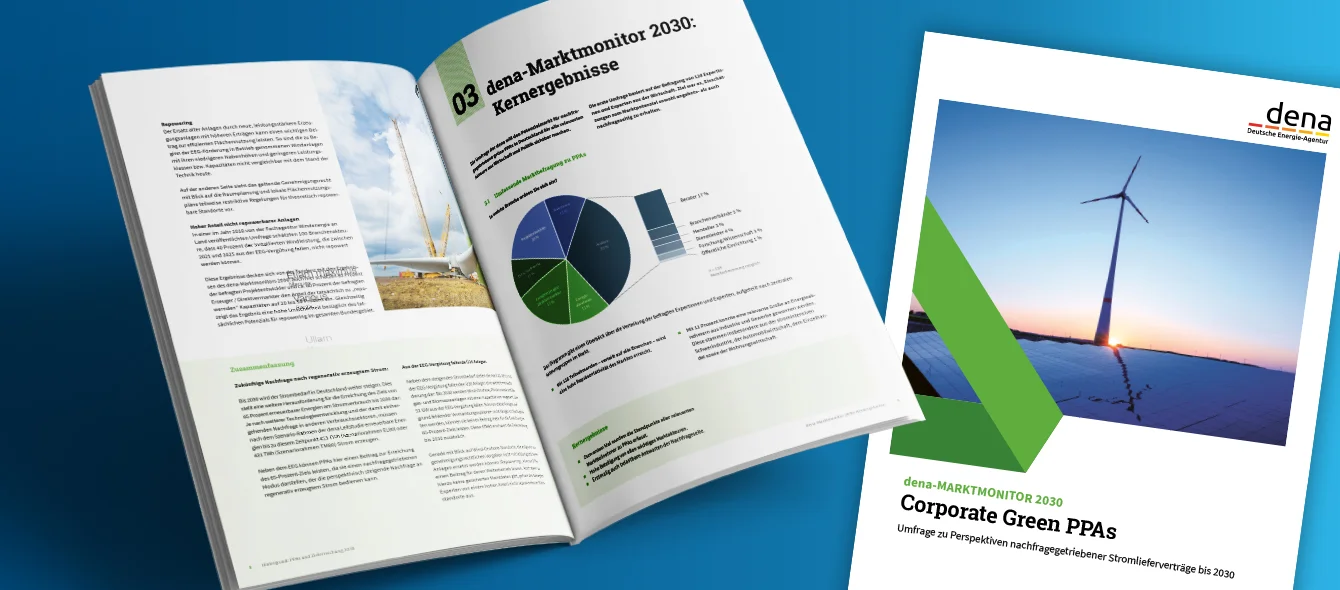Long-term electricity supply contracts, usually referred to by experts as power purchase agreements (PPAs), are considered a potential boon to investing on the electricity generation market. Such agreements give both parties planning certainty: Producers receive a sales guarantee and consumers certainty about their electricity costs. At least this is how the business theory goes. But do players on the market share this view?
This is the very question directed to 128 energy experts from various areas of the electricity market by the German Energy Agency (dena). Amongst the respondents were professionals from power producers and utilities, investment and project engineering firms, industrial associations and – most notably – consumer advocacy groups.
The outcome was quite unequivocal: More than half of them deem PPAs “important,” with another third believing they are actually “very important.” Only 14 percent of those polled feel PPAs are hardly or only slightly relevant to a “forward-looking market model for Germany.”
How important do you think PPAs are as a forward-looking market model for Germany?
What’s obvious is that Germany’s electricity sector is in need of investments – and not only because of the transition to renewable energy, which is to account to 65 percent of total power production by 2030 – but also because the country’s demand is likely to increase. The projected rise is from 515 terawatt hours (TWh) in 2015 to 699 TWh or 840 TWh in 2030 – “depending on progress made in technology,” according to dena.
No subsidies required
PPAs are considered especially relevant to marketing plants aged 20 and over, as they no longer qualify for apportionments under the German Renewable Energy Act. According to dena, assets accounting for a total of about 51 gigawatts (GW) will fall under this category by 2030. This represents over 40 percent of Germany’s aggregate generation capacity at the beginning of September in Germany. However, dena emphasises in its report that “72 percent of the polled players on the energy market already consider PPAs to be a financing model for new units.”
Long-term supply contracts do not constitute a new marketing model. However, they are more important to wind and solar power generators than to operators of fuel-fired power stations. The main reasons for this are two-fold: First, they contain an element of uncertainty since they depend on the weather. They can thus only react to demand to a limited extent and only produce as much as the competition, i.e. when electricity prices are fairly low. Firm procurement prices translate into reliable planning. Second, fuel-driven power plants fire on all cylinders when renewables take a break, i.e. during periods of relative scarcity and brief spikes in electricity prices.
Moreover, fuel-fired power stations (blue graph) have lower investment costs based on installed capacity. In exchange, the cost of generating an additional kilowatt hour is fairly high. Here, economists speak of high marginal costs. If such power plants stand still, their operating costs drop dramatically. They usually become profitable more quickly, but their profits always depend on commodity prices.
By contrast, the initial investment costs of wind and solar farms as well as hydroelectric power stations in particular hardly have any bearing at all. In addition, their maintenance and repair costs are low and largely dependent on their generation output. Economists speak of low marginal costs here. Such assets tend to turn a profit later. But once the investment costs have been recovered, virtually every incoming euro is a profit.
What advantages do you expect from concluding a PPA?
Based on a survey of 128 participants from all industries, e.g. project developers, energy producers, energy consumers and investors“Antitrust and tax issues, the future role of certificates of origin for green electricity and compensation for power prices must be evaluated and adapted specifically for the market.” Andreas Kuhlmann, Chairman of the dena board
The commercial calculation thus proves correct for most experts. Nevertheless, there is a particular underlying uncertainty: “Besides empirical data, potential suppliers and buyers of green electricity have identified additional hurdles given the legal framework.” In the preface to the study, Andreas Kuhlmann, Chairman of the dena board, calls on policymakers to take action: “Antitrust and tax issues, the future role of certificates of origin for green electricity and compensation for power prices must be evaluated and adapted specifically for the market.”
Photo credits: dena-MARKTMONITOR 2030, © dena
